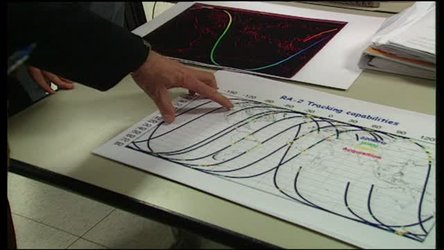Accept all cookies Accept only essential cookies See our Cookie Notice

About ESA
The European Space Agency (ESA) is Europe’s gateway to space. Its mission is to shape the development of Europe’s space capability and ensure that investment in space continues to deliver benefits to the citizens of Europe and the world.
Highlights
ESA - United space in Europe
This is ESA ESA facts Member States & Cooperating States Funding Director General Top management For Member State Delegations European vision European Space Policy ESA & EU Space Councils Responsibility & Sustainability Annual Report Calendar of meetings Corporate newsEstablishments & sites
ESA Headquarters ESA ESTEC ESA ESOC ESA ESRIN ESA EAC ESA ESAC Europe's Spaceport ESA ESEC ESA ECSAT Brussels Office Washington OfficeWorking with ESA
Business with ESA ESA Commercialisation Gateway Law at ESA Careers Cyber resilience at ESA IT at ESA Newsroom Partnerships Merchandising Licence Education Open Space Innovation Platform Integrity and Reporting Administrative Tribunal Health and SafetyMore about ESA
History ESA Historical Archives Exhibitions Publications Art & Culture ESA Merchandise Kids Diversity ESA Brand CentreLatest
Space in Member States
Find out more about space activities in our 23 Member States, and understand how ESA works together with their national agencies, institutions and organisations.
Science & Exploration
Exploring our Solar System and unlocking the secrets of the Universe
Go to topicAstronauts
Missions
Juice Euclid Webb Solar Orbiter BepiColombo Gaia ExoMars Cheops Exoplanet missions More missionsActivities
International Space Station Orion service module Gateway Concordia Caves & Pangaea BenefitsLatest
Space Safety
Protecting life and infrastructure on Earth and in orbit
Go to topicAsteroids
Asteroids and Planetary Defence Asteroid danger explained Flyeye telescope: asteroid detection Hera mission: asteroid deflection Near-Earth Object Coordination CentreSpace junk
About space debris Space debris by the numbers Space Environment Report In space refuelling, refurbishing and removingSafety from space
Clean Space ecodesign Zero Debris Technologies Space for Earth Supporting Sustainable DevelopmentLatest
Applications
Using space to benefit citizens and meet future challenges on Earth
Go to topicObserving the Earth
Observing the Earth Future EO Copernicus Meteorology Space for our climate Satellite missionsCommercialisation
ESA Commercialisation Gateway Open Space Innovation Platform Business Incubation ESA Space SolutionsLatest
Enabling & Support
Making space accessible and developing the technologies for the future
Go to topicBuilding missions
Space Engineering and Technology Test centre Laboratories Concurrent Design Facility Preparing for the future Shaping the Future Discovery and Preparation Advanced Concepts TeamSpace transportation
Space Transportation Ariane Vega Space Rider Future space transportation Boost! Europe's Spaceport Launches from Europe's Spaceport from 2012Latest
Disaster Management Update December 2003
DISASTER MANAGEMENT-2003
Earthquakes, volcanic eruptions storms and floods are some of the most frightening of natural disasters..
Satellites can deliver invaluable Accurate information about almost any region in the world and support the ground operations effectively. B
For more than ten years, the European Space Agency's Earth observation satellites ERS 1 and ERS 2 have provided objective images about the ozone hole about air pollution and early signs of global warming.
ESA's new environment Envisat has been designed to meet this need for disaster monitoring and fast data transmission even more effectively.
On average, the Charter Space and Major Disasters has been activated once a month in almost every part of the world.
Earth observation from space opens new ways.
Animation of vulcano activity Nyriagongo in 2002
Animation of floods in Germany in 2002
DISASTER MANAGEMENT-2003
00:41
Earthquakes, volcanic eruptions storms and floods are some of the most frightening of natural disasters.. For rescue teams and those dealing with humanitarian efforts time is the most valuable and critical resource. Accurate information about the situation on site and about future developments is crucial
01:02
Satellites can deliver invaluable information about almost any region in the world and support the ground operations effectively. But how does the right information get to the right place when it is desperately needed?
01:17
IN SOUND J?r?me B?quignon
The people on the ground need to assess quickly what is the size of the damage, where it occurred and how they can bring assistance to the place. Basically they need all these information. And that's the information that we try to derive from the data gathered by our imaging satellites.
02:00
For more than ten years, the European Space Agency's Earth observation satellites ERS 1 and ERS 2 have provided objectiv
-
CREDIT
ESA -
LICENCE
ESA Standard Licence
-
Documentary
-
-
-
-

Disaster Management: Aims & Achievements (2003)

Envisat Presentation 2003

Disaster Management

Espace et Catastrophes Naturelles















 Germany
Germany
 Austria
Austria
 Belgium
Belgium
 Denmark
Denmark
 Spain
Spain
 Estonia
Estonia
 Finland
Finland
 France
France
 Greece
Greece
 Hungary
Hungary
 Ireland
Ireland
 Italy
Italy
 Luxembourg
Luxembourg
 Norway
Norway
 The Netherlands
The Netherlands
 Poland
Poland
 Portugal
Portugal
 Czechia
Czechia
 Romania
Romania
 United Kingdom
United Kingdom
 Slovenia
Slovenia
 Sweden
Sweden
 Switzerland
Switzerland

























